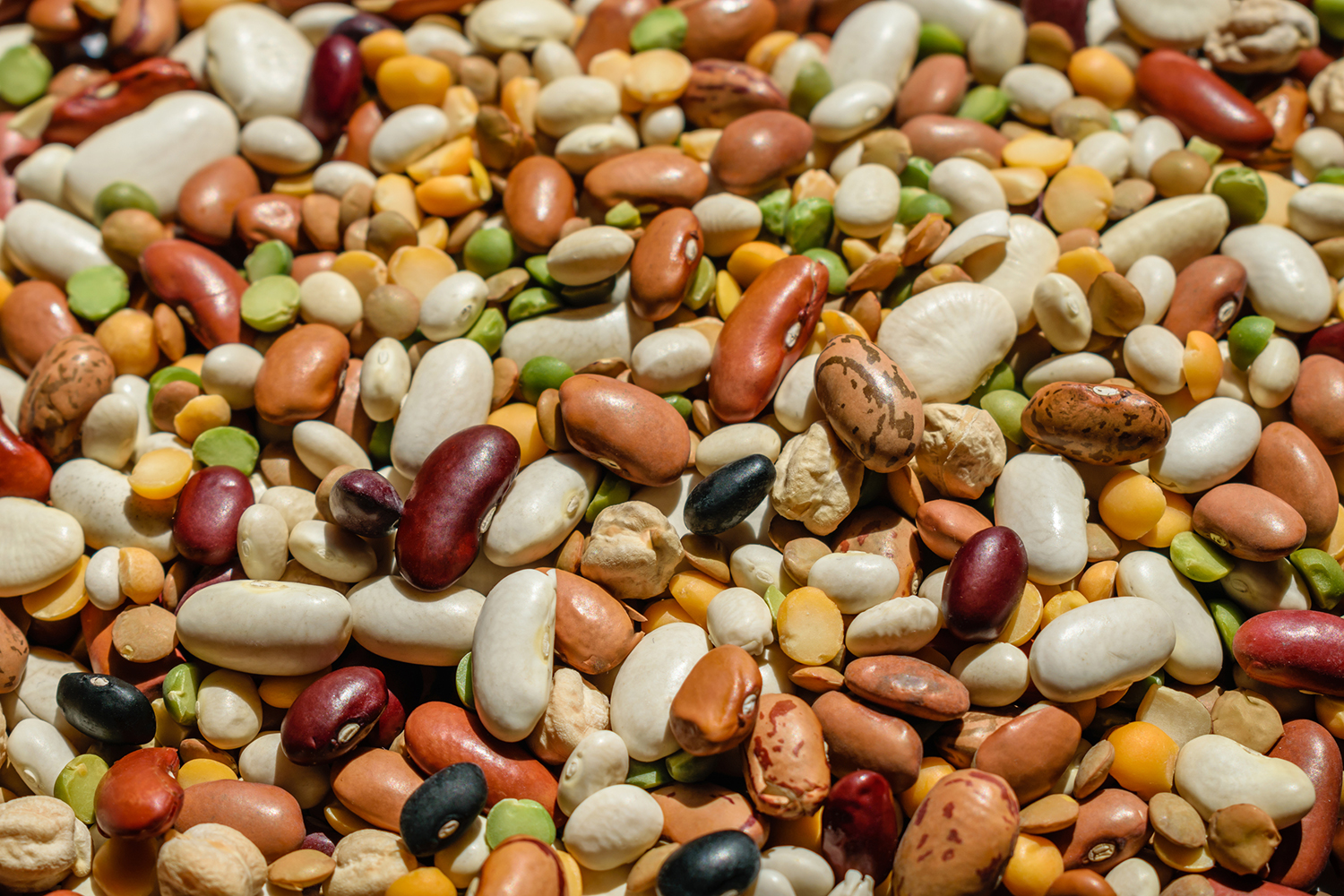What’s not to love about humble beans? They’re versatile, easy to prepare, nutritious, and inexpensive.
Also known as legumes, beans are one of the most ancient and nutritious foods in the world.
Whether in soups, pates, or main dishes, legumes are a versatile and important part of any diet.
Nutritional Benefits of Beans
-
Soluble Fiber
Beans are an excellent source of plant-based protein and one of the best sources of soluble fiber, which has been shown to lower cholesterol and help reduce the risk of Type 2 diabetes.
-
A Multitude of Vitamins and Minerals
They contain B vitamins, iron, magnesium, phosphorus, potassium, calcium, and zinc.
The combination of these nutrients—as well as the fiber in beans—may help decrease the risk of heart disease and various cancers.
-
High in Flavinoids
Beans are also an excellent source of flavonoids, which can help protect against cancer and heart disease. Of the bean family, black beans contain the highest amount.
Eating Beans The Right Way
-
For Better Digestion
Beans are a great complement to many foods like rice and vegetables—dark green, leafy veggies in particular.
The reason for this is that greens are alkaline, helping to neutralize the beans’ acidity and making them more digestible.
-
Canned Beans Are Okay!
Don’t shy away from beans because of their long soaking and cooking times:
When pressed for time, reach for convenient and easy-to-prepare canned varieties. These come precooked and ready-to-serve.
Just be sure to rinse them well before using: this not only brightens their flavor but also reduces sodium content.
Kinds of Beans and How to Use Them
-
Adzuki Beans
-
Nutritional Benefits
Adzuki beans are a rich source of iron, magnesium, potassium, zinc, folate, and fiber.
-
Cooking Tips
They are well-loved in Japanese cooking.
When these beans are prepared with rice, the rice takes on a beautiful reddish-purple hue.
You can cook them in a Crock-Pot or pressure cooker.
-
-
Black Beans
-
Nutritional Benefits
High in folate, black beans rank at the top among legumes for antioxidants and fiber.
They're often easier to digest than other varieties of legume.
-
Cooking Tips
These beans complement the flavors of other beans and can be used in salads, soups, chilies, salsas, burritos, and dips like hummus.
They complement many flavors, and go well with rice.
-
-
Black-Eyed Peas
-
Nutritional Benefits
These legumes provide calcium, folate, and vitamin A and are also rich in protein and fiber.
-
Cooking Tips
These soft, creamy peas can be pureed into spreads for sandwiches or served with rice.
They're absolutely soulful when cooking with collard greens for a traditional Southern dish.
-
-
Chickpeas (Garbanzo Beans)
-
Nutritional Benefits
Chickpeas are an excellent source of fiber and a good source of folate and magnesium.
-
Cooking Tips
With a mild flavor, chickpeas are ideal in stews, dips, and spreads, like hummus.
-
-
Fava Beans
-
Nutritional Benefits
Fava beans are an excellent source of folate and also supply zinc and thiamine.
-
Cooking Tips
Used extensively in Mediterranean cooking, fava beans have a rich flavor similar to split peas with a soft, potato-like texture.
-
-
Kidney Beans
-
Nutritional Benefits
Kidney beans are rich in fiber, folate, and iron.
-
Cooking Tips
Hearty and full-flavored, kidney beans are ideal in chilies, stews, soups, salads, and casseroles.
They're readily available canned or dried.
-
-
Lentils
-
Nutritional Benefits
Lentils are high in minerals, especially potassium, folic acid, and iron.
-
Cooking Tips
Lentils cook up rich and creamy with a peppery taste. They’re ideal for soups, dips, spreads, and as a meat substitute.
Enjoy them in lentil burgers and lentil loaf.
They are available whole or split.
-
-
Pinto Beans
Pale pink in color and streaked with reddish-brown: their name is Spanish for "painted."
-
Nutritional Benefits
Pinto beans are rich in protein, dietary fiber, and folate, as well as other vitamins and minerals.
-
Cooking Tips
Featured in chilis, burritos, soups, and salsas, pinto beans complement many flavors and goes well with rice.
They're also used for refried beans, and form the basis of several brown traditional sauces.
They may be available dried.
-
-
White Beans
Varieties include:
- pea beans
- cannellini beans
- great northern beans
- lima beans (and baby lima)
- navy beans
- white kidney beans
-
Nutritional Benefits
These provide virtually fat-free, high-quality protein plus fiber, vitamin B1, iron, phosphorus, and magnesium.
-
Cooking Tips
Pea sized and cream colored; meaty texture with buttery flavor, they are perfect for soups, stews, and creamy dips.





